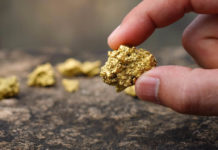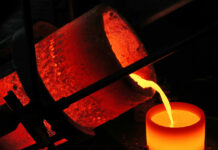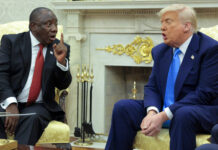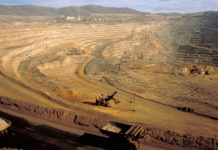
[miningmx.com] — GOLD Fields has said it hopes to make a decision
within three months on the way forward for the proposed West Rand tailings
treatment joint venture with Gold One International.
At a media conference held in Johannesburg on Friday for Gold Fields’ December-
quarter results, CEO Nick Holland also confirmed market speculation that a “ballpark’
cost for the project would be around R4bn.
“It could cost R4bn, but it could also cost more. It depends on how large the project
is and whether we tackle it in a modular fashion or go for a large volume operation up
front. We have to look at the trade-off between those two options.’
Holland said teaming up with Gold One, which now owned Rand Uranium, offers the
possibility of taking a modular approach to treat Rand Uranium’s high-grade uranium
dams first.
He said the uranium grade of the Rand Uranium surface deposits was about 200
grams per tonne, compared to the 50g/t of the deposits owned by the Gold Fields
mines.
“If we go for the modular approach, that would significantly decrease the upfront
capital required and it would mean we could fund future expansion from internally
generated cash.’
Another possibility for a modular approach was offered on the gold side where Gold
Fields’ KDC mines (the former Kloof and Driefontein operations) owned 30 million
tonnes of surface rock dumps, averaging about 7g/t which contained around 600,000
oz of gold.
That compared with a grade of just 0.35g/t for the far more extensive tailings dam
deposits owned by Gold Fields, which were estimated to contain a further 4.2 million
ounces of gold.
Asked about the likely equity split in the JV and who would manage the operation,
Holland replied, “I am not fussed over the issues of who will run the project or the
size of the respective stakes. My quest is value creation for my shareholders.’
One of the major issues for the project – which would create a business on a similar
scale to DRDGold’s Ergo on the Central and East Rand – was the provision of new
tailings disposal sites where the retreated material could be dumped.
Holland said Gold Fields already owned permitted sites that could be used for this
purpose.
DRDGold CEO Niel Pretorius told financial media earlier this week that to build a
project similar to Ergo from scratch “you get to a number of R4bn very quickly’.
He said DRDGold had been able to capitalise on the infrastructure acquired cheaply
from the original Ergo operation, set up previously by Anglo American.
Pretorius estimated the cost of the required pipeline network to be about R1bn, while
building the treatment plant would cost an additional R750m, which came with other
facilities such as the carbon-in-leach, elution and electro-winning plants.
Gold Fields increased its operating profit by 46% to R21.1bn in the year to end-
December, while headline earnings soared fivefold to R7bn. The total dividend was
330c a share, up 136% from 2010’s 140c.
“We have shown we can deliver leverage to the gold price,’ Holland said.
– The writer owns shares in Gold Fields.









